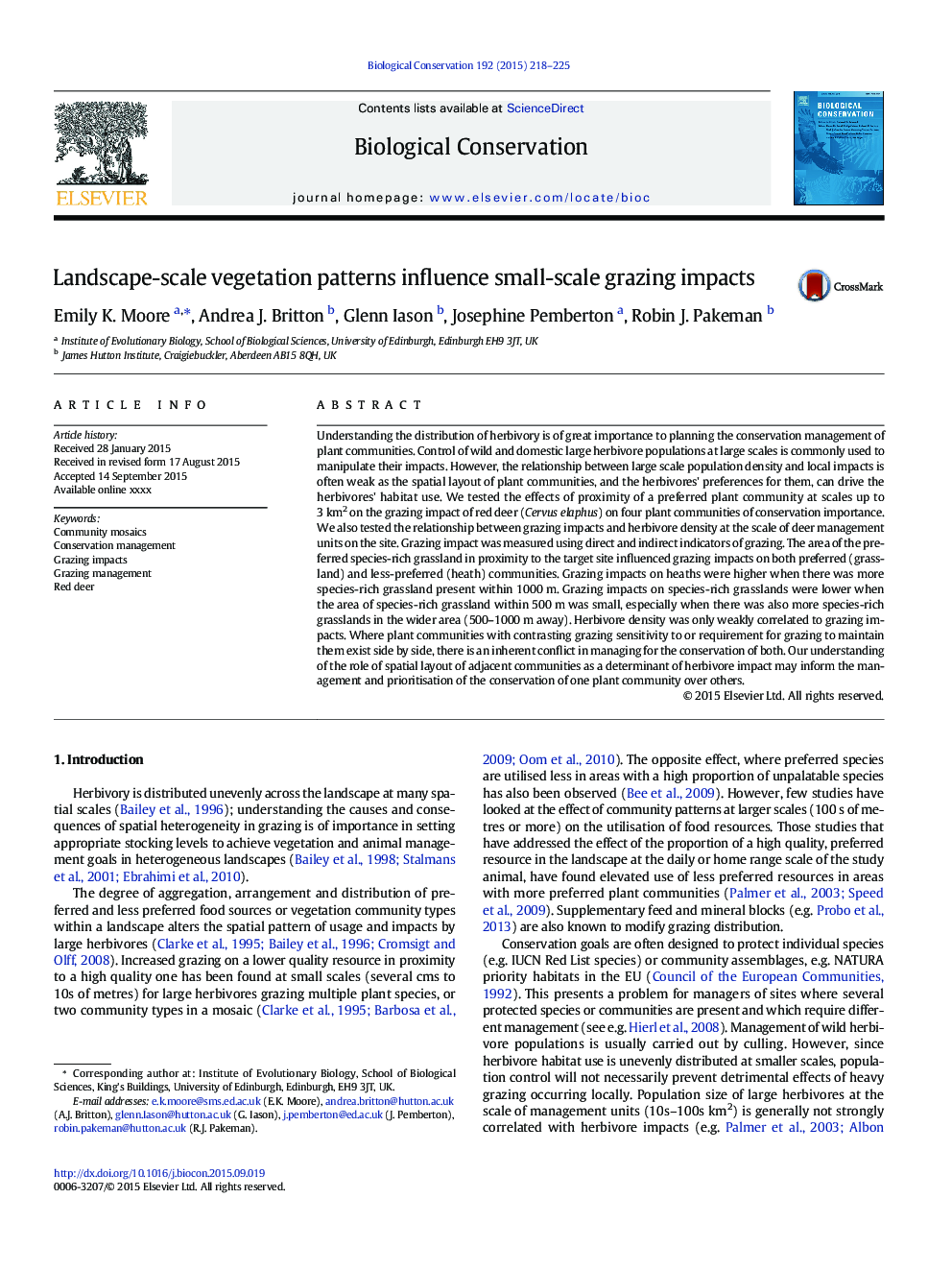| Article ID | Journal | Published Year | Pages | File Type |
|---|---|---|---|---|
| 6298578 | Biological Conservation | 2015 | 8 Pages |
Abstract
Understanding the distribution of herbivory is of great importance to planning the conservation management of plant communities. Control of wild and domestic large herbivore populations at large scales is commonly used to manipulate their impacts. However, the relationship between large scale population density and local impacts is often weak as the spatial layout of plant communities, and the herbivores' preferences for them, can drive the herbivores' habitat use. We tested the effects of proximity of a preferred plant community at scales up to 3Â km2 on the grazing impact of red deer (Cervus elaphus) on four plant communities of conservation importance. We also tested the relationship between grazing impacts and herbivore density at the scale of deer management units on the site. Grazing impact was measured using direct and indirect indicators of grazing. The area of the preferred species-rich grassland in proximity to the target site influenced grazing impacts on both preferred (grassland) and less-preferred (heath) communities. Grazing impacts on heaths were higher when there was more species-rich grassland present within 1000Â m. Grazing impacts on species-rich grasslands were lower when the area of species-rich grassland within 500Â m was small, especially when there was also more species-rich grasslands in the wider area (500-1000Â m away). Herbivore density was only weakly correlated to grazing impacts. Where plant communities with contrasting grazing sensitivity to or requirement for grazing to maintain them exist side by side, there is an inherent conflict in managing for the conservation of both. Our understanding of the role of spatial layout of adjacent communities as a determinant of herbivore impact may inform the management and prioritisation of the conservation of one plant community over others.
Related Topics
Life Sciences
Agricultural and Biological Sciences
Ecology, Evolution, Behavior and Systematics
Authors
Emily K. Moore, Andrea J. Britton, Glenn Iason, Josephine Pemberton, Robin J. Pakeman,
